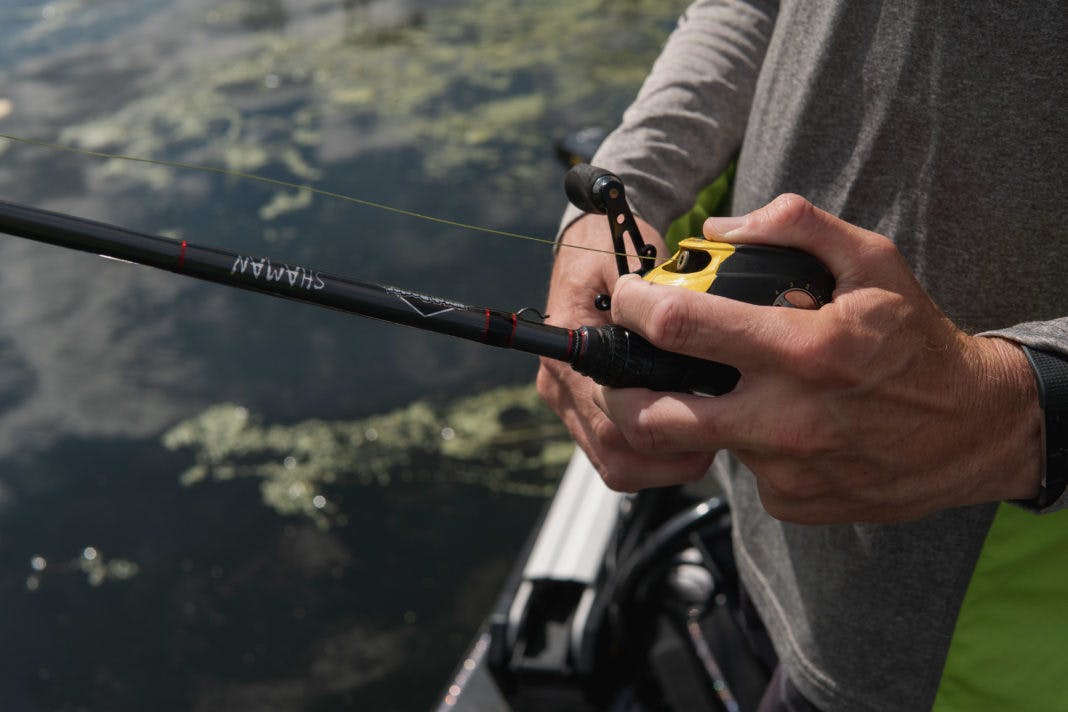
How to Choose a Fishing Line
The first thing many anglers do to prepare for their first fishing trip of the year is to put new fishing line on their reels. But taking a look at the fishing line on your reel is an important task to do prior to each fishing trip, as you want to make sure your fishing line is in good condition and is the correct line for that upcoming trip.
It is important to strip off last year’s fishing line, or old fishing line that has too much memory to it, or you may just not have enough on your reel’s spool needed for that next fishing trip.
Getting the maximum performance and benefits out of the fishing line you select, begins with properly storing it. Keeping your line in an area that is out of direct sunlight will keep it from getting damaged and have it performing to its peak.
When spooling your fishing reels, it is a good idea to spray the spool of line with some type line conditioner, along with a rag that I’ll run the line through as it goes on to the reel. This will help reduce the memory as the line goes on to your reel. It is also important to have a tight drag on your reels when winding on that new line, this coupled with keeping tension on the spool of line, will ensure that the fishing line is going on to your reel in a nice, neat and even manner.
You may be asking yourself right now, “ok so now I know how to put new line on my reels, but what type should I use?”
Well there are three main types of fishing line that an angler can select; monofilament, braid and Fluorocarbon. Each of these lines has a specific reason on why I use it; here is a quick rundown on each type and its key application.
Monofilament (Mono)
Mono is what the majority of anglers began using and it still has a place on an angler’s reel today, but in key situations. Since mono floats, it will allow your topwater baits to perform to the best of their ability, which is why I spool up mono when fishing topwater plugs such as a popper, walk-the-dog plug or buzzbait. The situation in which I turn to mono is when I’m fishing a shallow running crankbait. The reason for this is that as I mentioned above mono floats, so this will help keep my crankbait up in the water column and allow it to roll over the cover and not dig down into it. The other reason is that mono has stretch to it, so when you hook a bass on a treble hook bait and the fish makes a powerful surge, the mono will stretch and not tear the hooks out of the bass’s mouth.
Braid
The great thing about using braided line on your reels is that you have the ability to put your boat in areas where big bass live and know you’ll have the ability to get that bass in the boat. Braided line has little to no stretch, so when you set the hook, you are getting an instant hook set on the bass and when a bass try’s to turn and burry in the heavy cover, you can keep it from doing so and headed toward the boat. For me braided line is an absolute must when fishing topwater hollow bodied frogs in the slop or when you are flipping around heavy vegetation.
Fluorocarbon
For many anglers, a Fluorocarbon fishing line is the main type of line they are using now. This is for several reasons, one it has a high abrasion resistance, this means you can fish a bait around rock, wood and boat docks and not have to worry about your line getting as damaged, as if you were fishing with mono. Fluorocarbon has little to no stretch to it as well, so like braid you can get a rock solid hook set on the fish. Now what really sets Fluorocarbon fishing line apart is that it will disappear in the water. This means you can get many of the benefits of a braided fishing line, but you can use it in situations where fish are weary to your line size or the water you are fishing is extremely clear.
As you begin to navigate the fishing line options you have for your next reel, determine what type of cover you’ll be fishing, if you’ll be fishing a moving reaction style bait, or slowly dragging something on the bottom and the water clarity you’ll be fishing, as all these factors play in to selecting the type of fishing line, along with the line size.